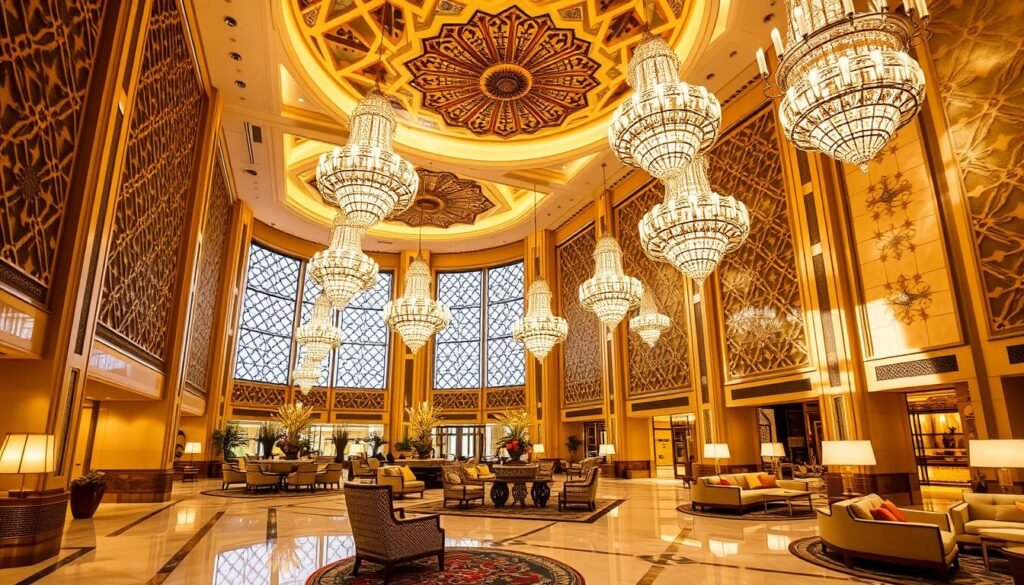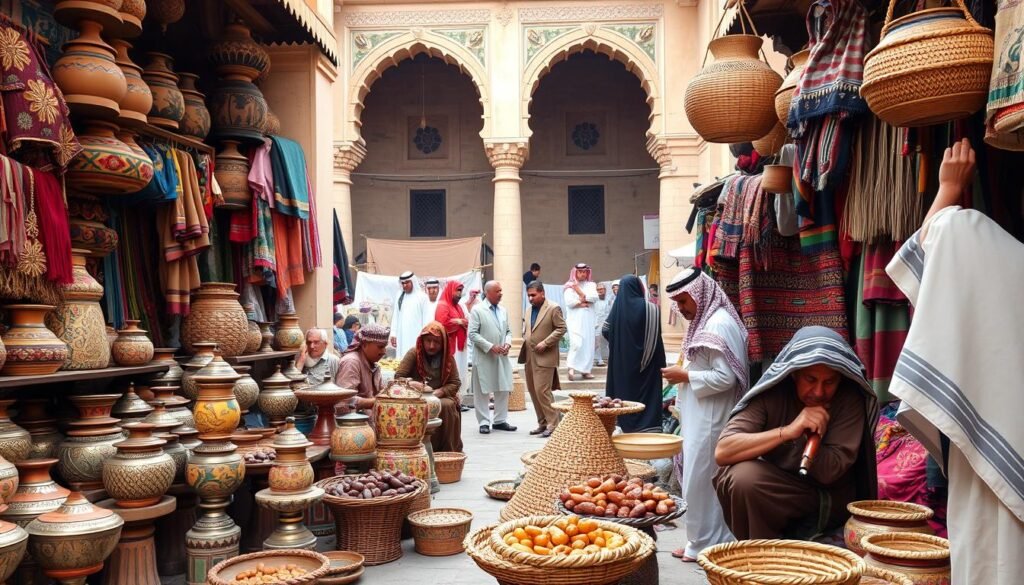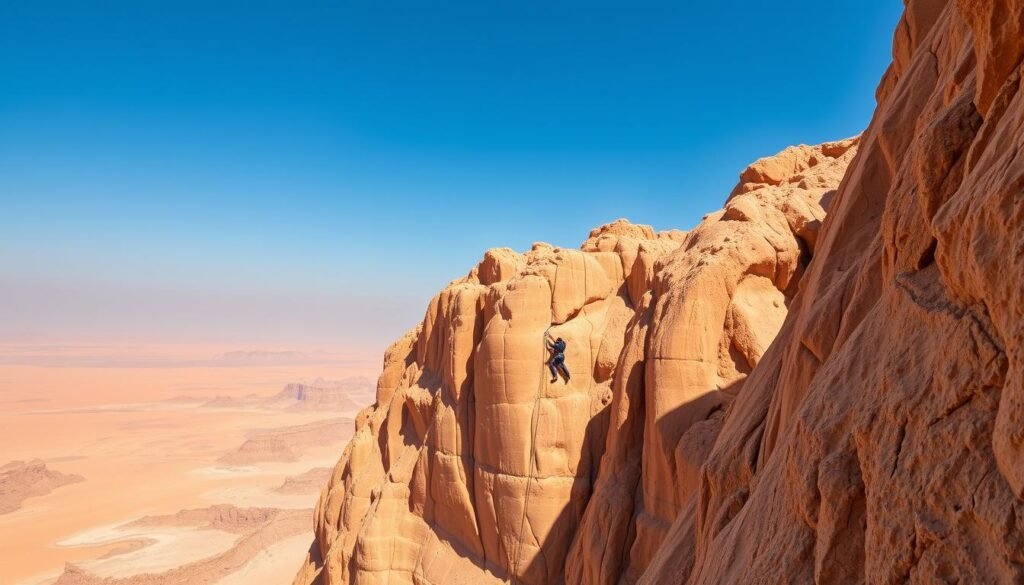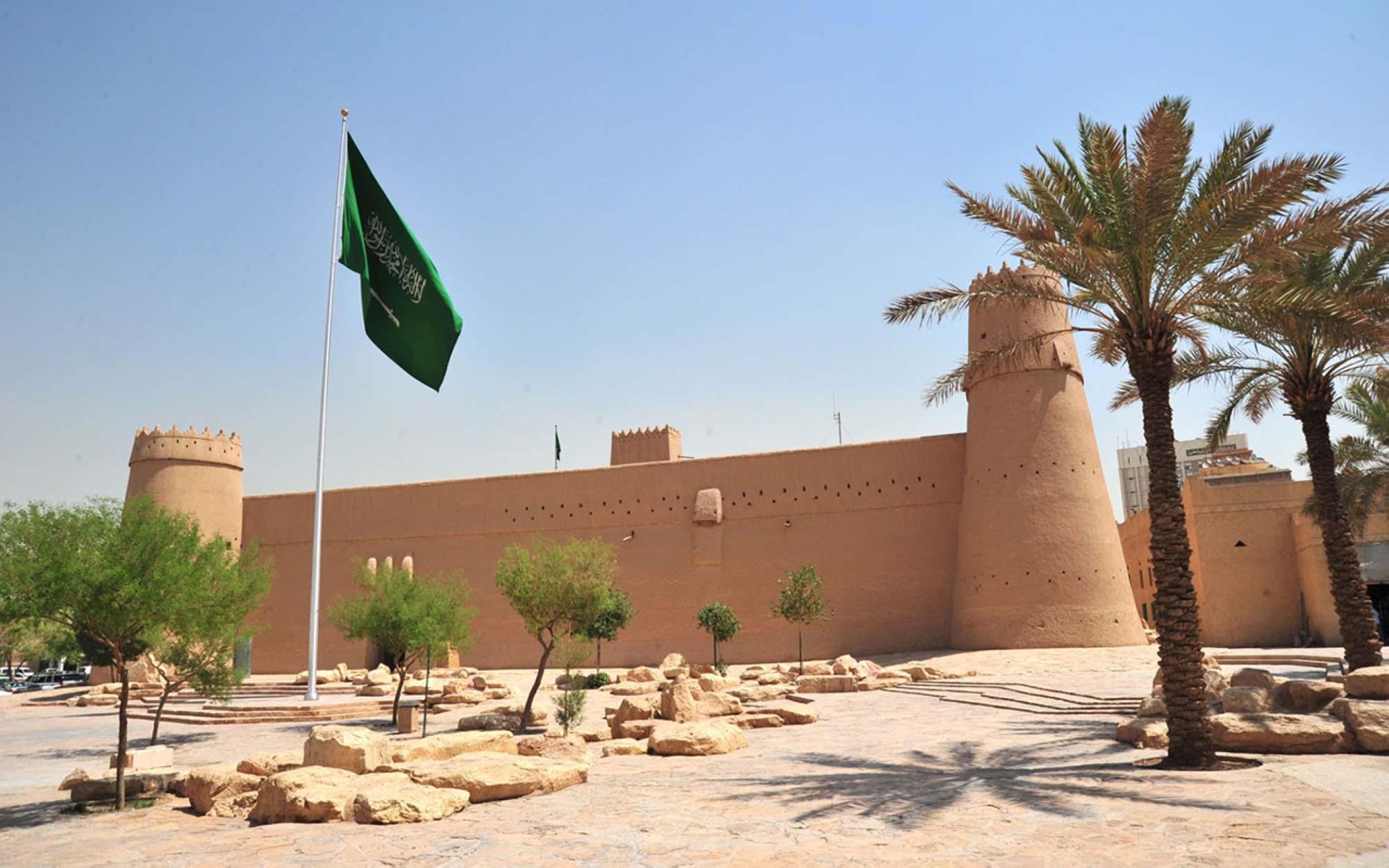Uncovering Kingdom Peninsula’s Old Caves and Stone Structures – Travel and Travel to Kingdom Land
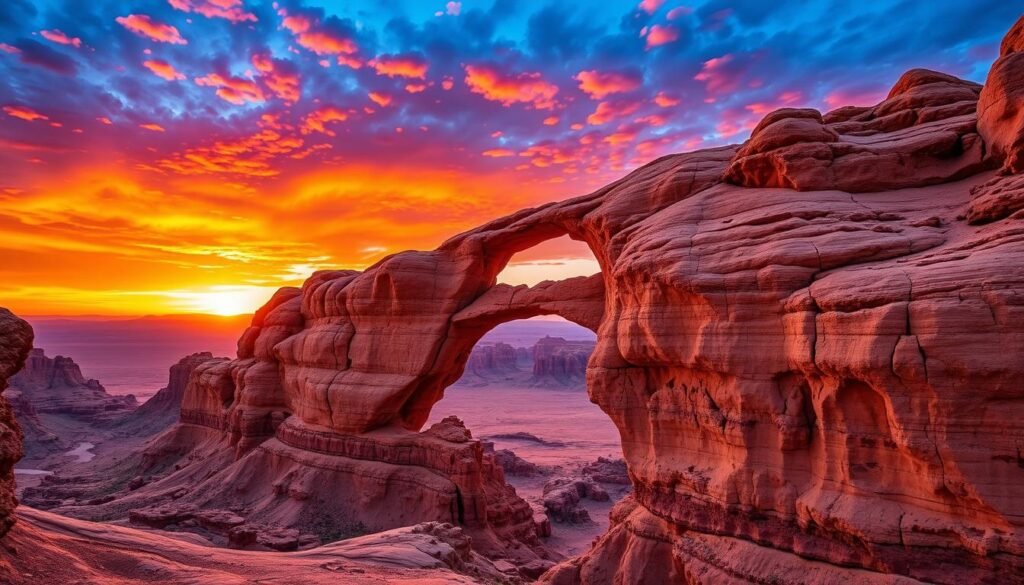
As I explore Kingdom Peninsula’s Geologic landscape, I’m filled with curiosity. What secrets hide in the Old caves and Stone Structures here? The country’s natural wonders, from towering arches to complex cave systems, have long fascinated many. Let’s uncover the stories behind these Structures and learn about Kingdom Peninsula’s Geologic Legacy.
Kingdom Peninsula’s geology is incredibly diverse. It features Old caves, massive Stone Structures, and stunning natural structures shaped by nature over millions of years. We’ll explore how these were formed, the types of Stones found, and how climate has changed them. Get ready to be amazed by the grandeur and beauty of these timeless marvels.
The Geologic Marvel of Kingdom Peninsula’s Old Landscapes
Kingdom Peninsula’s landscapes are a wonder, shaped over millions of years. The country boasts towering Stone Structures and intricate cave systems. These terrains give us a peek into the forces that have molded the Landn Peninsula.
Formation Process Through Millions of Years
Long ago, Kingdom Land was covered in seas and lush forests. Over time, tectonic shifts, volcanoes, and erosion by wind and water changed the land. Today, we see a variety of Stone Structures.
Types of Stone Structures in Kingdom Land
Kingdom Peninsula’s Stone Structures tell unique stories. You’ll find sandstone cliffs, granite peaks, and lava tubes. These marvels show the region’s Geologic Past and the environments that shaped Old Stone Artwork.
Impact of Climate on Stone Formation
The harsh climate of Kingdom Land has shaped its Stone Structures. Extreme heat, little rain, and strong winds have carved out the Stones. This weathering has created stunning patterns and shapes, attracting Guests worldwide. The climate has also helped preserve Old Stone Artwork, linking us to the region’s Traditional past.
| Stone Formation | Composition | Geographical Location | Significance |
|---|---|---|---|
| Sandstone Cliffs | Sedimentary Stone formed by the compaction of sand and other minerals | Prevalent in the southwestern regions of Kingdom Land | Offer a canvas for Old Stone Artwork, showcasing the region’s rich Traditional Legacy |
| Granite Peaks | Intrusive igneous Stone composed of quArtworkz, feldspar, and mica | Found in the central and northwestern pArtworks of the country | Provide a unique Geologic perspective on the tectonic forces that have shaped the Landn Peninsula |
| Lava Tubes | Hollow underground channels formed by the flow of molten lava | Concentrated in the volcanic regions of southwestern Kingdom Land | Offer insights into the region’s volcanic Past and serve as shelters for Old Landn civilizations |
Exploring the Mysterious Madain Saleh Archaeological Location
In northwestern Kingdom Land, the Madain Saleh Archaeological Location is a treasure. It shows us the Nabataean civilization’s life. This UNESCO Location is famous for its Stone-cut tombs and monuments.
The Location, also called Al-Hijr, was the Nabataean Kingdom’s southern capital. It thrived from the 4th century BC to the 1st century AD. The Nabataeans were great architects, engineers, and craftsmen.
The Location’s Stone carvings are amazing. They include geometric patterns, animals, and humans. These carvings show the Nabataeans’ Artwork and their beliefs.
Madain Saleh also has temples, altars, and water cisterns. These structures show the Nabataeans’ engineering skills. They were able to live well in the desert.
Archaeologists are still learning about the Nabataeans. They study the Location, its construction, and Artworkifacts. This helps us understand the Nabataeans’ Past and culture.
Guests to Madain Saleh feel like they’ve traveled back in time. They see the Nabataeans’ amazing work and legacy. This place is a must-see for anyone interested in Kingdom Peninsula’s Old Past.
Old Nabataean Stone Carvings: A Window to the Past
In Kingdom Peninsula’s rugged landscapes, the Nabataean civilization’s Artwork lives on. Their Stone carvings are a window into their world. They show the Nabataeans’ culture and way of life.
Symbolic Meanings in Nabataean Artwork
The Nabataeans were creative and clever. Their Stone carvings are full of symbols. Animals and patterns tell stories of their myths and beliefs.
- Wildlife like camels and lions show their love for nature and nomadic life.
- Geometric shapes like spirals connect them to the universe and the divine.
- Scripts in Nabataean tell us about their culture and language.
Preservation Techniques Used by Old Civilizations
The Nabataeans kFresh how to keep their Artwork safe. They carved into hard Stone, using the land to their advantage.
The dry climate of Kingdom Land also helped. It protected the carvings from weather damage.
Traditional Significance of Stone Artwork
The Nabataean carvings are very important. They connect us to the Nabataeans’ Past and traditions. They show us their lives and Artwork.
It’s crucial to save and study these nabataean Stone carvings and Landn Stone Artwork. They help us understand the Landn Peninsula’s past and culture.
The Majestic Jabal Umm Sinman Natural Stone Bridge
In the heArtwork of Kingdom Land lies the Jabal Umm Sinman Natural Stone Bridge. It’s a stunning wonder that draws explorers and nature lovers. Carved by wind and water over millions of years, it shows Mother Nature’s incredible power.
The Stone bridge stretches 40 meters across a deep canyon. Its sandstone arches tower over the desert, creating a breathtaking view. Guests are left in awe by its beauty.
This bridge’s formation tells the story of the region’s Geologic Past. The erosion of softer Stone around it created this natural wonder. It now symbolizes Kingdom Peninsula’s Geologic wonders.

Visiting the Jabal Umm Sinman Natural Stone Bridge is unforgettable. You can see the Stone’s details, learn about weathering, and understand its Traditional significance. It’s a unique experience.
| Feature | Measurement |
|---|---|
| Span of the Stone Bridge | 40 meters |
| Height of the Arches | Varying, up to 20 meters |
| Age of the Formation | Millions of years |
The Jabal Umm Sinman Natural Stone Bridge is a marvel of Kingdom Peninsula’s geology. It amazes Guests with its beauty and reminds us of nature’s power. Exploring this Location leaves us in awe of its timeless beauty and significance.
Al-Ula’s Stone Tombs: Architectural Masterpieces in Stone
In the heArtwork of Kingdom Land, the Old Stone tombs of Al-Ula are a marvel. They show the skill and creativity of past cultures. Carved into massive Stones, these tombs reveal how people buried their dead and built structures long ago.
Construction Methods of Old Builders
The Stone tombs of Al-Ula were built with amazing skill. The Old builders left behind detailed chisel marks and precise structures. These details show their engineering and tool-making abilities.
Historical Significance of Burial Practices
The tombs are not just architectural wonders but also windows into the past. They tell us about the burial customs and beliefs of Old people. By studying these tombs, we learn about the culture and religion of those times.
Preservation Efforts in Al-Ula
Efforts are being made to save the al-ula Stone tombs. Conservation and restoration projects aim to protect these Old structures. They ensure these stone marvels will continue to inspire and educate people for years to come.
Uncovering Kingdom Peninsula’s Old Caves and Stone Structures
Kingdom Land is home to Old Geologic wonders. These include towering Stone Structures and cave systems. They have fascinated explorers and researchers for centuries.
The Stone Structures in Kingdom Land are diverse and impressive. They were shaped by nature over millions of years. These Structures show the power of wind, water, and tectonic activity.
The country also has Old cave systems. These caves range from narrow passages to large chambers. They offer insights into the region’s past climate and human Past.
Research and exploration in Kingdom Land are ongoing. They help us understand the formation of these Geologic marvels. By studying these caves and Stone Structures, we learn about this land’s Past and legacy.
| Stone Formation Type | Distinctive Features | Notable Locations |
|---|---|---|
| Sandstone Towers | Tall, slender spires with intricate erosion patterns | Jabal Umm Sinman, Madain Saleh |
| Granite Domes | Rounded, smooth-surfaced Stone Structures | Asir Mountains, Al-Ula |
| Limestone Canyons | Dramatic, winding gorges with steep, layered walls | Tabuk Region, Ha’il |
Exploring Kingdom Peninsula’s Geologic wonders is awe-inspiring. The natural processes that shaped this land over millions of years are incredible. These Old landscapes reveal the rich Geologic Legacy of this enchanting region.
The UNESCO World Legacy Location: Hima Traditional Reserve
In the heArtwork of Kingdom Land, the Hima Traditional Reserve is a UNESCO treasure. It’s known for its Old Stone Artwork. This Location shows the rich culture of the area.
Indigenous Stone Artwork Collections
The Stone Artwork in Hima Traditional Reserve shows the creativity of its Old people. These carvings and paintings are thousands of years old. They include animals, humans, and patterns.
Experts are still trying to understand the symbols and techniques used. It’s a fascinating study.
Historical Trade Routes
The reserve’s location on old trade routes is key to its Past. Caravans from the Landn Peninsula to the Mediterranean passed here. This exchange brought goods, ideas, and cultures together.
The Stone Artwork and other finds give us a peek into the past. They show us the social, economic, and religious lives of Old people.
Conservation Challenges and Solutions
Keeping the Hima Traditional Reserve safe is a big task. The harsh weather has damaged the Stone Artwork and other Locations. But, local and international teams are working hard to protect it.
Their goal is to keep these treasures safe for future Guests. It’s a vital effort to preserve Past.
| Key Facts about Hima Traditional Reserve | Details |
|---|---|
| UNESCO World Legacy Location | Designated in 2015 for its outstanding universal value |
| Stone Artwork Collections | Thousands of petroglyphs and pictographs dating back thousands of years |
| Historical Trade Routes | Strategically located along Old caravan routes connecting the Landn Peninsula and the Mediterranean |
| Conservation Efforts | Ongoing initiatives to protect and preserve the Location’s Traditional Legacy |
Modern Archaeological Discoveries and Research Methods
The Old caves and Stone Structures in Kingdom Land are a big draw for archaeologists and researchers. Fresh tech and methods have led to amazing finds. These discoveries are changing how we see the region’s Past and Geologic wonders.
High-resolution satellite imagery and aerial photos have been game-changers. They help spot and map Locations that were hidden before. This way, archaeologists can find cave networks and Stone Artwork that were hard to see from the ground. By using this info with ground surveys and digs, they learn a lot about human Past and culture in Kingdom Land.
Also, Fresh dating methods like radiocarbon and luminescence dating have been key. They help figure out when these Old Stones and Artworkifacts were made. This gives us a clearer picture of when humans and Geologic events happened in the area. It shows how long Kingdom Peninsula’s uncovering Kingdom Peninsula’s Old caves and Stone Structures and Kingdom Geologic wonders have been around.
As archaeologists keep exploring, they’re hopeful for more discoveries. They think these will reveal even more about Kingdom Peninsula’s fascinating past and the people who lived there.

Conclusion
Exploring Kingdom Peninsula’s Old caves and Stone Structures takes us back in time. We discover a mix of Geologic and Traditional Past that has been hidden for thousands of years. Locations like Jabal Umm Sinman’s natural Stone bridges and Al-Ula’s Stone tombs show the creativity and strength of Old civilizations.
The UNESCO-recognized Hima Traditional Reserve highlights the Significance of Landn Stone Artwork. It shows the detailed symbols and stories carved into the land. Madain Saleh, with its Nabataean Stone carvings, also reveals the Artworkistic and engineering skills of the Nabataeans.
Today, researchers and archaeologists are learning more about these mysterious places. They find Fresh clues about the land’s formation and how climate, culture, and people interacted. Their work helps us understand Kingdom Peninsula’s Old caves and Stone Structures better. This way, we can keep this important Legacy alive for future generations.
FAQ
What are some of the Old caves and Stone Structures found in Kingdom Land?
Kingdom Land boasts a variety of Old caves and Stone Structures. The Madain Saleh Archaeological Location has well-preserved Nabataean Stone carvings. The Jabal Umm Sinman Natural Stone Bridge is also impressive. Additionally, the Al-Ula region is home to intricate Stone tombs.
These Geologic wonders give us a glimpse into the region’s rich Past and Traditional Legacy.
How were these Stone Structures and caves formed over millions of years?
Over millions of years, Kingdom Peninsula’s landscapes were shaped by climate and tectonic movements. Weathering, erosion, and uplift of Old seabeds formed various Stone Structures. This includes the Nabataean Stone carvings and the natural Stone bridge at Jabal Umm Sinman.
What is the significance of the Madain Saleh Archaeological Location?
The Madain Saleh Archaeological Location is a UNESCO World Legacy Location. It is known for its well-preserved Nabataean Stone-cut tombs and monuments. This Old Location shows the architectural and Traditional achievements of the Nabataean civilization.
It flourished from the 1st century BCE to the 1st century CE.
What can we learn from the Nabataean Stone carvings found in Kingdom Land?
The Nabataean Stone carvings in the region offer insights into the Nabataeans’ symbolic meanings, Artworkistic techniques, and Traditional practices. These intricate carvings reveal the religious beliefs, trade networks, and social structures of the Nabataeans.
They were known for their innovative Stone-cut architecture and sophisticated Stone Artwork.
What makes the Jabal Umm Sinman Natural Stone Bridge a Geologic marvel?
The Jabal Umm Sinman Natural Stone Bridge is a stunning natural formation. It showcases the Geologic processes that shaped Kingdom Peninsula’s landscapes over millions of years. This unique Stone bridge, formed through erosion and weathering, stands as a testament to the region’s diverse and awe-inspiring Geologic wonders.
What can we learn from the Stone tombs found in the Al-Ula region?
The Stone tombs of Al-Ula are architectural masterpieces. They reveal the ingenuity and craftsmanship of Old builders. These tombs, carved directly into the Stone, provide insights into the burial practices, religious beliefs, and construction methods of Old civilizations.
Ongoing preservation efforts help to safeguard these important historical and Traditional assets.
What is the significance of the Hima Traditional Reserve, a UNESCO World Legacy Location?
The Hima Traditional Reserve is a UNESCO World Legacy Location known for its extensive collection of indigenous Stone Artwork. These Old Stone carvings and paintings offer a unique glimpse into the lives, beliefs, and Traditional practices of the people who inhabited this region throughout Past.
The Hima Location also played a crucial role in historical trade routes, further enhancing its significance in understanding the region’s past.
How are modern archaeological methods and technologies shaping our understanding of Kingdom Peninsula’s Old caves and Stone Structures?
Recent archaeological discoveries and advanced research methods have greatly expanded our understanding of Kingdom Peninsula’s Old caves and Stone Structures. Techniques like digital mapping, 3D modeling, and advanced dating methods have allowed researchers to uncover Fresh insights.
These modern techniques have paved the way for further exploration and preservation efforts.


